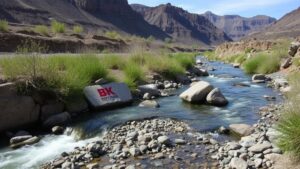The Basics of Sampling Copper-Bearing Rocks in the Field
The Basics of Sampling Copper-Bearing Rocks in the Field
Sampling copper-bearing rocks is a critical process in mineral exploration and mining. Proper sampling techniques are essential for obtaining accurate data that can inform decisions regarding resource extraction, environmental management, and economic feasibility. This article provides an in-depth look at the fundamentals of field sampling for copper-bearing rocks, including techniques, best practices, and real-world applications.
Understanding Copper-Bearing Rocks
Copper-bearing rocks are geological formations that contain significant amounts of copper minerals, such as chalcopyrite, malachite, or azurite. e rocks can be found in various geological environments, including:
- Porphyry deposits
- Volcanogenic massive sulfide deposits
- Sedimentary copper deposits
Recognizing the type of deposit is essential for effective sampling since different geological settings may require varied approaches.
Sampling Objectives
Before conducting sampling, it is crucial to define the objectives clearly. Common objectives include:
- Assessing the grade and distribution of copper
- Identifying potential reserves
- Evaluating the environmental impact
Having clear objectives helps maintain focus and ensures data collected is relevant and useful for decision-making.
Sampling Techniques
There are several sampling techniques commonly employed in fieldwork, each with advantages and limitations. The choice of method largely depends on the geological setting and sampling objectives.
1. Grab Sampling
Grab sampling involves collecting a small amount of material from a specific area. This method is best for obtaining a quick assessment of the copper content. But, it may not provide representative averages due to the variability in concentration.
2. Channel Sampling
Channel sampling entails cutting a continuous channel through a rock face to collect a more representative sample. This method is often used in underground mines or outcrops and can provide a better indication of the average grade over a particular interval.
3. Drill Sampling
Drill sampling involves the collection of samples through drilling methods, such as diamond-core drilling or reverse circulation drilling. e methods produce cylindrical core samples that can be analyzed for their mineral content, providing comprehensive data about the subsurface geology.
Best Practices for Sampling
To ensure the reliability of sampling results, the following best practices should be followed:
- Randomize sampling locations to avoid bias.
- Record detailed geological observations at each sampling site.
- Use clean and standardized equipment to prevent contamination.
- Document the chain of custody for samples from collection to analysis.
Data Analysis and Interpretation
Once samples are collected, they must be analyzed in a laboratory setting. Common analytical methods for copper content include:
- Atomic Absorption Spectroscopy (AAS)
- Inductively Coupled Plasma Mass Spectrometry (ICP-MS)
Data interpretation should consider the geological context, and statistical methods can be applied to determine the precision and accuracy of the results.
Real-World Applications
Effective sampling of copper-bearing rocks is crucial for informing mining operations and investment decisions. For example, the BHPs Olympic Dam in Australia utilizes extensive sampling techniques to assess copper deposits, enabling them to make informed decisions regarding resource management. Such cases exemplify the significance of proper sampling protocols in optimizing resource extraction.
Conclusion
Sampling copper-bearing rocks involves various techniques and considerations aimed at obtaining reliable and representative data. By understanding the geology, selecting appropriate sampling methods, and adhering to best practices, professionals can significantly enhance the accuracy and effectiveness of their mineral exploration endeavors. Continuous learning and application of these sampling fundamentals are essential for the sustainable management of mineral resources.


